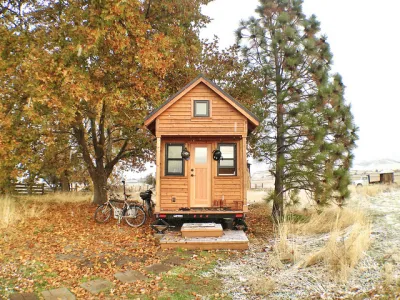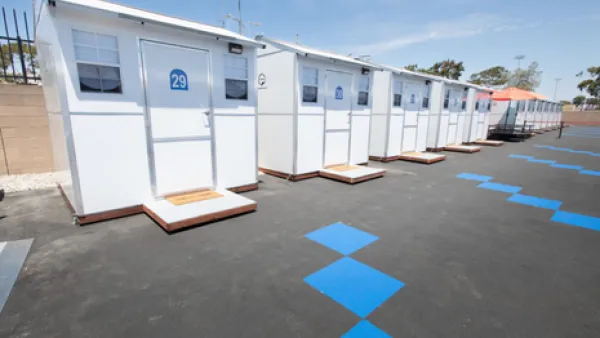Vox publishes an article debunking tiny houses as the housing silver bullet some hope they will become.

Dylan Matthews argues the case against tiny houses by debunking their primary appeal: that tiny houses are affordable. That "premise is a fantasy," according to Matthews, who himself lives in a 300-square-foot apartment.
The premise is a fantasy, according to Matthews, because
It ignores the real reason that housing is unaffordable — at least in the coastal urban centers where fantasies of tiny housing are most potent. The problem, simply put, is that 1) land in cities where you'd want to live is expensive and 2) many cities don't let developers use that land efficiently.
Given those two constraints, tiny houses have yet to become a viable presence in the housing market, argues Matthews. The flip side of Matthew's argument also has implications for the rest of the existing housing market in desirable cities like San Francisco, New York, and Washington, D.C.:
You're not paying for your overlarge apartments. No one in these cities is overwhelmed by how gigantic all their housing options are.
Construction is the cheap part. Land is the expensive part.
The article includes a detailed survey of articles from additional sources to inform the article.
FULL STORY: The case against tiny houses

National Parks Layoffs Will Cause Communities to Lose Billions
Thousands of essential park workers were laid off this week, just before the busy spring break season.

Retro-silient?: America’s First “Eco-burb,” The Woodlands Turns 50
A master-planned community north of Houston offers lessons on green infrastructure and resilient design, but falls short of its founder’s lofty affordability and walkability goals.

Delivering for America Plan Will Downgrade Mail Service in at Least 49.5 Percent of Zip Codes
Republican and Democrat lawmakers criticize the plan for its disproportionate negative impact on rural communities.

Test News Post 1
This is a summary

Test News Headline 46
Test for the image on the front page.

Balancing Bombs and Butterflies: How the National Guard Protects a Rare Species
The National Guard at Fort Indiantown Gap uses GIS technology and land management strategies to balance military training with conservation efforts, ensuring the survival of the rare eastern regal fritillary butterfly.
Urban Design for Planners 1: Software Tools
This six-course series explores essential urban design concepts using open source software and equips planners with the tools they need to participate fully in the urban design process.
Planning for Universal Design
Learn the tools for implementing Universal Design in planning regulations.
EMC Planning Group, Inc.
Planetizen
Planetizen
Mpact (formerly Rail~Volution)
Great Falls Development Authority, Inc.
HUDs Office of Policy Development and Research
NYU Wagner Graduate School of Public Service





























